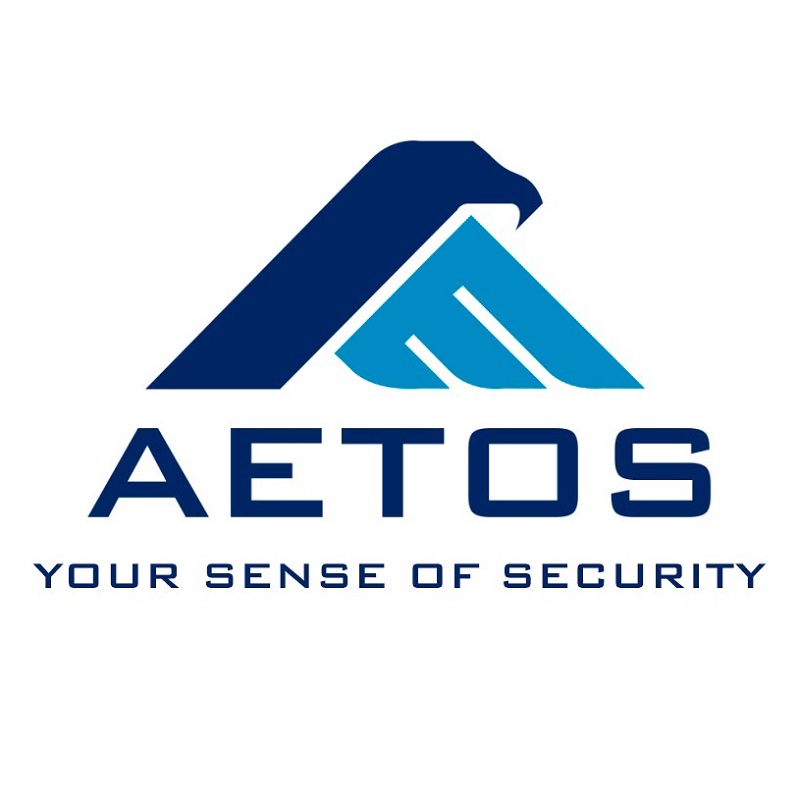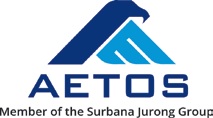
By: James Tan, Executive Director & CEO, AETOS Holdings Pte Ltd
Automation technology promises to make security more personal and purposeful, and the latest innovation from AETOS is a sign of things to come.
 A concierge, security guard or customer service staff? The Automated Security Terminal plays all three roles. With calls for tougher security being made, automation could be the key to greater efficiency.
A concierge, security guard or customer service staff? The Automated Security Terminal plays all three roles. With calls for tougher security being made, automation could be the key to greater efficiency.
Times are changing. With a rising number of crimes and terrorist attacks being reported around the globe, businesses and individuals are more vulnerable than before. The growing awareness of such threats has also cast the spotlight on security.
In Singapore, the government recently announced proposed amendments to the Public Order Act, making it mandatory for security measures to be implemented for events with more than 5000 people. A new Infrastructure Protection Act is also being introduced, requiring selected buildings to ensure sufficient protection.
Although this call for safety has opened up business opportunities for the security industry, perennial problems such as manpower scarcity has put solution providers on the back foot. Singapore currently faces a shortage of almost 10,000 security guards, as many shun this job due to its long working hours.
With this challenge likely to persist, it is imperative that security providers look to automation to reduce the workload and dependency on human personnel as well as improve efficiency.
Augmenting traditional security with automation
There is a growing realisation that relying only on people for security is no longer effective due to the possibility of human error. Even the best security personnel can make mistakes, which can be extremely costly.
Thus, it has become critical for security providers to no longer depend on only physical security, but to also complement it with automation to address security concerns.
After all, there are certain instances when these technologies can perform better than humans. For instance, machines or robots offer a set of eyes that will never tire, while being constantly responsive to important information.
There is also an outside chance that human personnel might not always be compliant with various security regulations. However, with an automated system there will be no such doubt, as it will be programmed to monitor protocol violations.
Although the initial capital cost of installing technology might be high, the subsequent costs will almost be 50 per cent lower than round-the-clock security guards.
With automated technologies being more cost-effective, responsive and secure, it comes as no surprise that they are now being widely considered as practical successors to outdated security measures.
Innovating for more efficient security
Although there are myriad security technologies in the market such as facial recognition, biometrics and iris tests, they alone cannot offer value. This is where innovation comes into play – one will have to find ways to blend these different technologies together in order to come up with a useful security product.
For instance, many buildings want to fend off illegal trespassers. However, the role of many of the guards today has been reduced to that of a mere concierge.
This is where an automated visitor management system can help guards work better. Using integrated technology, it can simultaneously fulfil the functions of a concierge, security guard and customer service officer. A 24/7 automated system executed effectively by security personnel can indeed safeguard the building and quickly process visitors in a cost-effective manner.
A case in point is AETOS’ new Automated Security Terminal (AST), an interactive self-service kiosk that also functions as a concierge, security guard and customer service personnel.
AST aims to reduce the workload of human personnel by replacing the work of three guards. It supports security electronically by accurately capturing visitors’ pictures and authenticating their identity before generating a one-time access pass. By digitally recording the visitor’s entry and exit times, the AST also provides an audit trail that is easy to access.
Such visitor management systems can go beyond fulfilling the fundamental job requirements of a security and customer service personnel. It can also offer advanced features such as traffic analytics, generating an accurate and detailed report on who has entered and exited the premises.
Completed two months ago, the AST is currently in the demonstration phase. Instead of being offered as a product, it will be offered as a service: monthly payments will be made by users, with a minimum two-year contract period.
Automation is here to stay
As both residential and commercial complexes adopt smart infrastructure, the prominence of electronic security solutions will only increase. In the future, buildings will depend less on manpower, and more on user-friendly automated services to purposefully manage their security.
However, one must note that with new technologies rapidly emerging, it would be nearly impossible for any existing security product to be future-proof. For instance, we foresee AST’s lifespan to be three years, after which it will need to be upgraded with the latest technology to offer a better service.
Therefore, it is vital for the security industry to continuously look out for new technologies to improve their products.
AETOS is doing just that with its ring-fencing security solution, which uses a camera system to protect the perimeter of its client’s premises. The camera uses the latest video analytics software to create a detection zone outside the fence.
The moment someone enters this zone, motion will be detected and the intruder will be tracked as a person of interest. The command centre will then be intimated immediately to deploy security personnel.
However, we observed that we could still lose sight of the intruder if he quickly jumps over the fence and goes out of the camera’s range. To address this possibility, we are working on improving this solution by developing a drone that can follow his whereabouts.
Automated technologies are indeed playing a key role in helping solution providers proactively address security loopholes. With advanced threats on the rise, security firms will have to constantly innovate to be at the top of their game. Only then can we live in a safer world.





